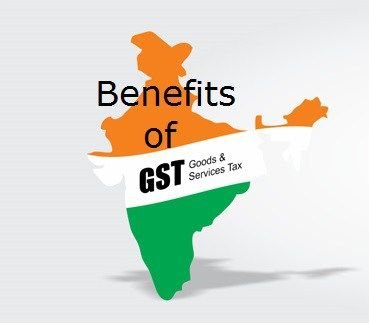The introduction of the Goods and Services Tax (GST) in India has affected small enterprises nationwide. To stay competitive and compliant, small business owners must grasp the complexities of GST.
The goal of the Goods and Services Tax (GST) was to eliminate the cascading impact of taxes by combining several indirect taxes into a single tax system. The change has not, however, been without its difficulties. From the first technological disruptions to juggling changes in their cash flows and compliance obligations, small businesses have encountered many obstacles.
Yet, it’s difficult to overlook GST’s advantages. For small enterprises, reduced taxation, enhanced cost competitiveness, and a strengthened digital economy are all advantageous. The secret is to adjust swiftly and make the best use of the resources at hand.
We go into great length on the effects of GST on small businesses in this blog. We go over the major advantages that GST provides as well as the noteworthy difficulties that it presents. Most importantly, we offer focused advice and tactics to help small business owners adjust to and prosper under the new GST system. The correct strategy can help India’s small enterprises use GST as a driver of expansion and prosperity.

Recognizing the Benefits of GST for Small Businesses
India launched the Goods and Services Tax (GST), a unified indirect tax system, on July 1, 2017. It took the place of several cascading taxes imposed by the federal and state governments, including the services tax, VAT, and excise duty.
By combining all of these levies into a single tax system, GST aims to greatly simplify India’s indirect tax structure. It assists in averting the situation where taxes were paid on taxes. For instance, under the previous arrangement, the value of the items, including excise charge, was subject to VAT. The ultimate cost of goods increased as a result of tax cascading.
The country’s tax system has become more streamlined and uniform thanks to the GST. Four tax slabs—5%, 12%, 18%, and 28%—are included in the GST system. These tax slabs apply to goods and services according to their classification.
The following are some of the main advantages of GST for Indian small businesses:
Simplified tax compliance:
Instead of needing to file taxes on a monthly and annual basis, small businesses now just need to do so once. Time and effort are saved because the whole GST process—from registration to return filing—is done online.
No more tax cascading:
The removal of taxes on taxes and the elimination of tax cascading have both contributed to a decrease in firms’ overall expenses. For every commodity or service they use, they are eligible to receive an input tax credit.
Enhanced competitiveness:
Small businesses are now more competitive because to lower prices for their goods and services brought about by the tax burden reduction.
Taxation is uniform in India:
Before the introduction of the GST, state-specific rates applied to service tax and VAT. With uniform rates that apply throughout India, GST creates a level playing field.
Increased supply chain efficiency:
The GST has removed state-to-state checkposts, allowing for speedier commodities movement and reducing the loss of perishables.
Consequently, GST has given India’s small enterprises a number of growth prospects by increasing the tax system’s accountability and openness.

GST's Advantages for Small Businesses
The goal of the GST’s implementation in India is to give the nation’s small enterprises a number of advantages. The following are some of the main benefits of GST for small businesses:
Tax Compliance Made Simpler
To replace India’s intricate indirect tax system with a single, unified tax system is one of the main goals of the Goods and Services Tax (GST). Instead of having to deal with numerous taxes like excise duty, VAT, services tax, etc., small businesses now only have to deal with one tax. For small enterprises, this has greatly streamlined the compliance procedure.
For example, a small Surat-based clothing manufacturing company used to have to pay sales tax, service tax, VAT, and excise duty. They just have to pay one Goods and Services Tax under the GST, which greatly simplifies tax compliance.
Diminished Tax Recurring
In the previous system, taxes were imposed at every level of manufacturing, which resulted in a tax cascade. By offering a tax credit for taxes paid on inputs at every level of production, the GST seeks to lessen this tax cascading.
Small firms profit from this since it allows them to claim input credit for all taxes paid during the product cycle. This lowers the final cost of production and enhances cash flows.
Enhanced Rivalry
Small firms can now compete on an even playing field with larger companies thanks to GST. Small firms can concentrate on enhancing their productivity and operations by reducing their tax obligations and streamlining compliance.
Small firms are now more competitive in the market on a national and worldwide level as a result. By eliminating export tariffs and streamlining the tax refund procedure, GST increases the competitiveness of exports.
Achievement Stories
The introduction of GST has already helped a number of small enterprises. A few instances are:
- As input costs decreased, food processing company ABC Pvt Ltd noticed a 5% reduction in their tax burden. Profits and cash flows increased as a result.
- XYZ Traders, a small trading company, discovered that having a single tax rate made compliance easier than having various VAT rates. Their tax preparation expenses were 20% lower.
- The manufacturer of vehicle components, Def Industries, is now able to claim input credit on taxes paid. Their competitiveness increased as their production costs decreased by 8%.

Challenges Under the GST for Small Businesses
There were numerous difficulties for Indian small enterprises as a result of the GST’s adoption. These are a few of the main difficulties they encountered:
Challenges of Transition
- For many small firms, the transition to the new GST system was challenging and complicated. To comprehend the new tax structure, rates, procedures, and compliance requirements, they had to put in time and effort.
- During the transition period, many small firms encountered technology issues. For traditional family-run firms in particular, adopting and integrating new software and processes for GST compliance proved a challenge.
- At first, there was a lot of ambiguity and confusion around the needs for documentation, procedures, and other compliance-related issues. During the transition phase, small firms experienced disruptions due to unclear policies.
Complexities of Compliance
- The Goods and Services Tax has significantly raised the administrative and compliance burden for small enterprises. Compliance costs have increased due to the need to file returns on a regular basis and to keep thorough records.
- Complying with the various GST registration requirements based on business models becomes challenging for small enterprises that operate in many states.
- Due to complicated procedures and heavy documentation requirements, small firms still find it difficult to take use of the input tax credit. Difficulties with compliance are exacerbated by a lack of labor and financial resources.
Effects of Adjusting Tax Rates
- Small businesses were confused about how much to charge for goods and services due to the frequent changes in GST rates. It required numerous changes to pricing tactics.
- A lot of small firms were shifted to a lower tax category by the reduction in the rates of goods tax. Long-term benefits notwithstanding, it had an immediate negative impact on their working capital and cash flows.
- Service providers were negatively impacted by higher service tax rates. Many small businesses saw a rise in their working capital requirements as a result.

Overcoming GST-Related Obstacles for Small Businesses
Small enterprises in India faced some noteworthy issues as a result of the GST changeover. Nevertheless, there are methods and approaches that can assist them in getting over these obstacles:
Utilize Technology
- To automate compliance procedures, invest in accounting and invoicing software that complies with GST. This lowers errors and improves process management.
- Integrate existing business systems with GST functions by using GST Suvidha Providers (GSPs).
- Implement e-way bill solutions to facilitate efficient cargo transportation and enhance logistics.
- To increase efficiency and accuracy, go digital with electronic invoicing and return filing.
Seek Expert Guidance
- To assure compliance, at least during the initial part of the shift, engage the services of a GST consultant or accountant.
- Consult chartered accountants for advice on credit management, money management, and reconciliations.
- To stay current, take advantage of the seminars and training courses provided by trade associations.
Employee Upskilling
- Hold internal training courses for staff members regarding GST regulations and protocols.
- Through GST technical courses, empower staff members to manage technological tools for compliance.
- Employ qualified experts or designate current employees as the GST SPOC to oversee compliance.
- Inform staff members of any updates about GST notifications and adjustments.
Through the use of technology, professional assistance, and employee upskilling, small firms may adjust to changes more quickly and achieve better organized compliance with GST.

The Need to Adjust to the New Tax System
It is imperative that small enterprises adjust to the new GST regime in order to reap the full benefits and guarantee compliance. Here are a few crucial topics small firms ought to concentrate on:
Recognize Your Tax Duties
- Research the GST laws and guidelines that apply to the kind of business and sector you are in. Recognize your eligibility for input taxes, registration procedures, and tax obligations.
- Seek advice and clarification from a chartered accountant or GST advisor. Knowing the effects of GST can aid with tax optimization.
Accept Digitalization
- As much as you can, shift your company’s operations to digital format. To make compliance easier, use accounting and billing software that complies with GST.
- To facilitate the tracking of invoices, taxes paid, and credits, keep thorough digital records. This facilitates audits and increases transparency.
Make Use of the Resources at Hand
- Use the government’s resources, such as workshops, helplines, and tutorials, to increase your understanding of GST.
- Participate in seminars offered by professional networks and groups. Engage in peer interaction to share notes.
- Consult with qualified tax consultants for advice. Think about hiring professionals to handle compliance-related tasks like filing returns.
Small businesses can achieve smooth compliance and speedier adaptation by proactively utilizing available resources, digitizing operations, and improving their understanding of GST. It is important to see GST as an enabler rather than a barrier.

Small Businesses' Compliance with GST
In order to effectively adhere to the GST regulations, small enterprises need to prioritize the timely submission of returns, upholding accurate documentation, and utilizing input tax credits.
On-time Submission of GST Returns
Depending on their annual sales, small firms must file monthly or quarterly GST filings. Small businesses must file their GST returns on time in order to avoid fines, interest, and other repercussions. The following are the principal GST returns that small businesses must file:
- GSTR-1: Information on the business’s outbound supplies. Due the 10th of the following month.
- GSTR-3B: The monthly summary GST return is GSTR-3B. Due on the 20th of the next month.
- GSTR-2A: Inbound supply details are automatically filled in and created on the 11th of each month.
Small businesses should have procedures in place to collect information, document transactions, and accurately complete their GST returns before the deadline. On-time filing promotes compliance and guarantees the smooth distribution of input tax credits.
Keeping Accurate Documents
- Regarding GST transactions, small firms must keep accurate records and accounts, including sales, purchases, and the accompanying bills, invoices, credit/debit notes, and other needed documentation.
- Maintaining accurate records helps small firms to claim input credits, account for GST taxes accurately, present required documents for audits and assessments, and stay out of trouble when they don’t follow the rules.
- Small businesses can ensure data correctness for GST filing and streamline record keeping by investing in accounting software or ERP systems.
Most Common Input Tax Credits
- Small businesses can claim an input tax credit (ITC) for GST paid on purchases made for their operations. ITC lowers the ultimate cost of goods and services and assists in removing the cascading effect of taxes.
- Small enterprises must save the purchase invoices and timely complete their GST returns in order to be eligible for ITC. GSTR-2A will show the ITC, and GSTR-3B is where it can be claimed.
- It’s also crucial to check ITC claims for any duplicates or ineligible credits. Every month, ITC must be reconciled to make sure credits are correctly obtained and applied.
Small companies can lower their tax expenses, boost working capital, and improve their competitiveness by adhering to regulations correctly and claiming ITC.

Strategies for Tax Planning
To maximize benefits and minimize tax liabilities under the GST regime, small firms must engage in efficient tax planning. To engage in compliant and efficient tax planning, small businesses should have a comprehensive awareness of the GST exemption rules and evaluate the tax implications of every business decision.
Exemption Provisions for Leverage
The government offers a number of GST exclusions that small businesses can take advantage of to lower their tax obligations. For instance, companies that generate less than ₹40 lakhs in revenue annually qualify for the GST Composition Scheme. By choosing this plan, small firms can avoid input tax credits and pay a low flat rate of tax. Companies can also take advantage of exclusions for specific products and services, like milk, fresh veggies, public transit, etc.
Examine the Tax Repercussions
Small firms should consider the GST effects of all company decisions, including those pertaining to contracts, sales, marketing plans, accounting, and procurement. For instance, small enterprises should consider the effects on pricing and cash flow, potential input tax credits, and applicable tax rates while acquiring raw materials. In a similar vein, decisions on contracts, pricing, and sales should take the GST implications into account.
Planning Taxes Effectively
To minimize their tax payment, small enterprises should proactively organize their business operations based on a comprehensive understanding of the GST requirements and ramifications. The amount of GST owed can be reduced by taking steps including grouping exempt supply together, keeping business operations inside a single state, and filing quarterly reports to receive input tax credits. Getting expert counsel can also assist small firms save money on taxes, maintain GST compliance, and gain a competitive advantage.

It's Critical for Small Businesses to Continue Learning
It is imperative that small businesses dedicate time and resources to ongoing education regarding GST regulations and developments. Notifications and circulars are regularly used to modify the GST framework and tax rates. For small businesses to stay compliant, they must stay updated.
Keep abreast of evolving regulations:
CFOs and owners of small businesses should review the notices sent out by the GST Council concerning adjustments to tax rates, obligations for compliance, deadlines for filing documents, and other matters. To keep informed, they can join forums, subscribe to updates via the GSTN portal, or get expert counsel.
Keep an eye out for updates and new compliance requirements:
With so many notifications, it’s simple to overlook important changes. A system for monitoring and implementing compliance changes pertaining to invoicing regulations, credit utilization, e-way bills, registration requirements, etc. should be in place for small enterprises. Noncompliance may result in sanctions.
Utilize online resources and training:
Reputable organizations offer a variety of e-learning platforms and educational resources that include training on GST rules, revisions, and processes. These can be used by small enterprises to develop internal resources.

Success Stories and Case Studies
India’s small enterprises have exhibited perseverance and made a smooth transition to the new GST system. The following case studies and success stories are motivational:
ABC Traders
ABC Traders is a Surat-based small clothing trading company. ABC Traders extensively educated themselves on the new tax structure upon the implementation of GST. They put in place the necessary technological framework for filing GST returns and issuing invoices. Their burden of compliance was much lessened as a result. Because of the cascading tax structure under the previous tax regime, ABC Traders was experiencing a major decline in business. Their products became more competitively priced as a result of their ability to pass on the benefits of the input tax credit to their customers under the GST. In the first year of the GST’s adoption, their business grew by more than thirty percent.
Secure Enterprises
In Bengaluru, Secure Enterprises offers electronic home security systems for sale. In order for them to be tax compliant, the installation of the GST required them to harmonize their internal procedures and eliminate inefficiencies. They used technology to ensure precise tax filing and instructed their employees on GST regulations. They were therefore able to effectively and hassle-free file their GST returns on schedule. They could now concentrate on their main business with peace of mind. Secure Enterprises also benefited from the idea of input tax credit under the GST, which was not previously available. Their working capital situation improved as a result of their efficient tax preparation.
Cafe Daily
Mumbai is home to the Cafe Daily brand of coffee shops. It was tedious for them to have to pay service tax, VAT, and other local taxes in the past. Their tax system got more simplified under the GST. However, delays in input tax credits originally prevented them from using their working capital. To resolve the challenges, they collaborated with consultants. As compliance become more consistent over time, Cafe Daily’s input credits were timely reconciled. Their liquidity situation was enhanced by this. In the long run, Cafe Daily profited from GST’s simplicity.
The success examples demonstrate how small firms can benefit from GST if they prepare ahead of time, are persistent, and can adjust.
Small firms can increase their GST preparation, minimize compliance errors, and take advantage of possibilities by investing time and energy into learning. Making the investment to increase one’s knowledge and skills will pay off handsomely.
Thank you for reading, we hope you found our blog valuable.
Feel free to reach out for personalized assistance in elevating your digital presence, contact us today!

